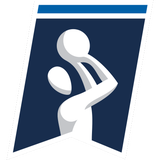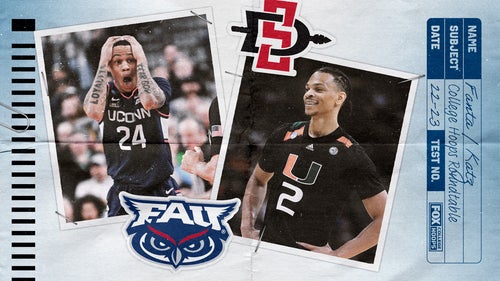
Gonzaga athletic director is co-architect of hoops success
SPOKANE, Wash. (AP) You might say Gonzaga athletic director Mike Roth has tunnel vision.
Roth, co-architect of the team that is making its first Final Four appearance this weekend, is too nervous to watch the Bulldogs play from a seat. Years ago, he started standing in the tunnels leading into basketball arenas, where he could pace and mutter as the Bulldogs played.
''I get nervous energy around games,'' Roth said this week. ''It gives me the ability to work off that nervous energy.''
You can expect to find Roth standing in a tunnel when Gonzaga plays South Carolina on Saturday in Glendale, Arizona, with the winner advancing to the title game.
''Why mess with something that's working?'' Roth said.
You could say that about Roth's entire 20-year tenure as athletic director.
While coach Mark Few and his players deservedly get the lion's share of attention for the team's success, Roth is the behind-the-scenes leader.
It was Roth who elevated Few to head coach in 1999. Roth also found the money to retain the coach when bigger programs came calling. It was Roth who marshalled the resources to build the McCarthey Athletic Center, a huge improvement over the old home court. He oversees the departments that ensure players remain eligible and graduate.
These days he is basking in the acclaim of the team's first trip to the Final Four.
''People don't realize how hard it is,'' Roth said. ''How crazy hard 19 straight NCAA Tournament appearances are.''
He noted that last year's team that advanced to the Sweet 16 lost four starters, including two to the NBA. ''Now we are in the Final Four,'' Roth said.
Roth grew up in Moses Lake, a small town 90 miles west of Spokane, and played one year of JV basketball at Gonzaga in the early 1980s. He returned to the school as a low-level administrator a few years later, and was named athletic director in 1998.
''They haven't been able to get rid of me since,'' Roth joked.
One of his earliest tasks was to retain Few, then an assistant coach to Dan Monson. Few was being courted by larger programs that could offer more money, Roth recalled.
The solution was to anoint Few as Monson's designated successor in the summer of 1998, Roth said.
Monson led the Zags on their magical run to the Elite Eight a few months later and then left for Minnesota. Few was elevated to the top job and has taken the Zags to the NCAA Tournament every year.
Over the years numerous schools have tried to hire Few away, but Roth has been able to find the money to keep the coach in Spokane.
''We are a model for other schools,'' Roth said. ''Why just give in, if you can keep your successful coach?''
As a private school, Gonzaga does not disclose salaries. However, documents Gonzaga filed with the IRS show that Few made more than $1.6 million in salary and other compensation from the university for the year ending May 31, 2015, the latest year available.
Roth's other showcase achievement was securing the funds to build the 6,000-seat McCarthey Athletic Center, a $26 million project that would have been unthinkable without the series of NCAA appearances. The MAC has been sold out for all but one game since it opened in 2004, and was a huge improvement over the bandbox Martin Centre, which had less than half the capacity.
Roth has remained a key player as Gonzaga continued to upgrade its program. Years ago, the Zags switched to charter flights instead of flying commercial. They play a tough non-conference schedule and all of their games are televised. Roth estimates that athletic department revenues have grown by a factor of 30 in two decades.
Twenty years ago, the university was struggling with declining enrollment and debt. Now enrollment has nearly doubled to more than 7,500 students and construction cranes sprout on campus, developments that are largely attributed to the success of the basketball team.
Because of the success, Roth has had offers to move on to programs in the Power 5 conferences. He has declined.
''I've been very content,'' Roth said. ''Gonzaga's been great.''
One of the things he is proudest of is that, with the exception of one, all of the basketball players who finished their eligibility at Gonzaga have graduated. Three Gonzaga players - Dan Dickau, Kelly Olynyk and Nigel Williams-Goss - completed the rare feat of becoming both athletic and academic All-Americans, Roth said. Last year, Gonzaga and Dartmouth were tied as the best academic performers among athletic departments, Roth said.
Gonzaga is often criticized for playing in the relatively weak West Coast Conference, which consists mostly of small private schools. Saint Mary's and BYU are the only league rivals who can consistently challenge the Zags.
Roth said the conference is a good fit in most respects. But Gonzaga remains open to changing conferences in the future, should there be an opportunity to improve the level of opponents, he said.
''I have no crystal ball on conference realignment,'' Roth said.
---
More AP college basketball: http://collegebasketball.ap.org and http://www.twitter.com/AP-Top25



